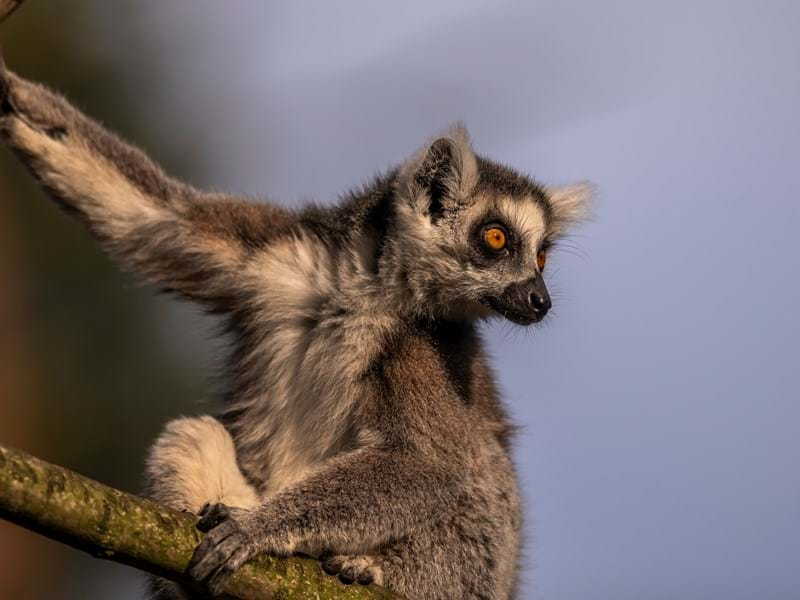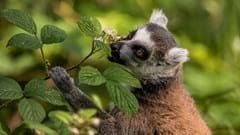Lemurs
Endemic to Madagascar, Ring-tailed lemurs are easy to spot due to their long, striped black and white tails.
Thought to have floated to Madagascar on rafts of vegetation millions of years ago, Lemurs, like many of Madagascan species, have evolved very differently to other animals around the world due to Madagascar’s isolation. They spend a lot of their time on the ground (as you might notice when you visit the park) foraging for fruit, leaves, flowers, sap and tree bark to eat. Fun fact! It is the females that are dominant in the Lemur world.
Ring-tailed Lemurs use their distinctive tails to to communicate with each other, they will also use them in “stink battles” by rubbing scents on their tails and flicking them at other Lemurs.
SPECIES
Ring-tailed Lemurs are endemic to Madagascar, just off the east coast of Africa. They are mostly found in the dense forests of South West.
DID YOU KNOW?
Although Lemurs are primates they are not monkeys.
You can often see Lemurs sunbathing in a Buddha-like position, their black skin helps them to absorb the sun’s heat through the fine fur on their stomachs.
BREEDING
Lemurs tend to have 1-2 babies with a gestation period of around 140 days. Ring-tailed lemurs are social animals, living in large groups of up to around 24 individuals. They have a strict female dominant hierarchy.
NUMBERS
There are only around 2000 individuals left in the wild. The main threats are habitat loss, hunting, and capture for the illegal pet trade.
Red-Bellied Lemurs
Lemur Woods is home to Red-bellied Lemurs too. One of the most territorial of all Lemurs in Madagascar, Red-bellied Lemurs are categorised as vulnerable on the IUCN Red List.
Red-bellied Lemurs are different to other primates due to their muzzled face and wet nose. Active during both day and night making them a cathemeral species, male Red-bellied Lemurs have a large scent gland on their forehead used to mark territory.
The population of Red-bellied Lemurs is sadly in decline with there believed to only be around 20,000 Red-bellied Lemurs left in the rainforests of Madagascar.


Crowned Lemurs
Lemur Woods is also home to 3 Crowned Lemurs. Named after the distinctive crown pattern on the top of their heads, these Lemurs live in groups, called troops and bond through grooming each others fur.
Crowned Lemurs are classed as Endangered on the IUCN Red List.

What's on today
Daily programme
| Time | Event | Location |
|---|---|---|
| 12:00 PM | Leaping Lemurs Ranger Talk | Lemur Woods |
| 3:00 PM | Leaping Lemurs Ranger Talk | Lemur Woods |
Nearby? Also look out for…

Monkeys of Africa Experience
Meet five amazingly different primates of Africa on this ranger-guided private tour.

Lemur Experience
Join our leaping Lemurs, as they scurry all around you during this amazing experience!
Subscribe
Get the latest news & offers from Yorkshire Wildlife Park!











